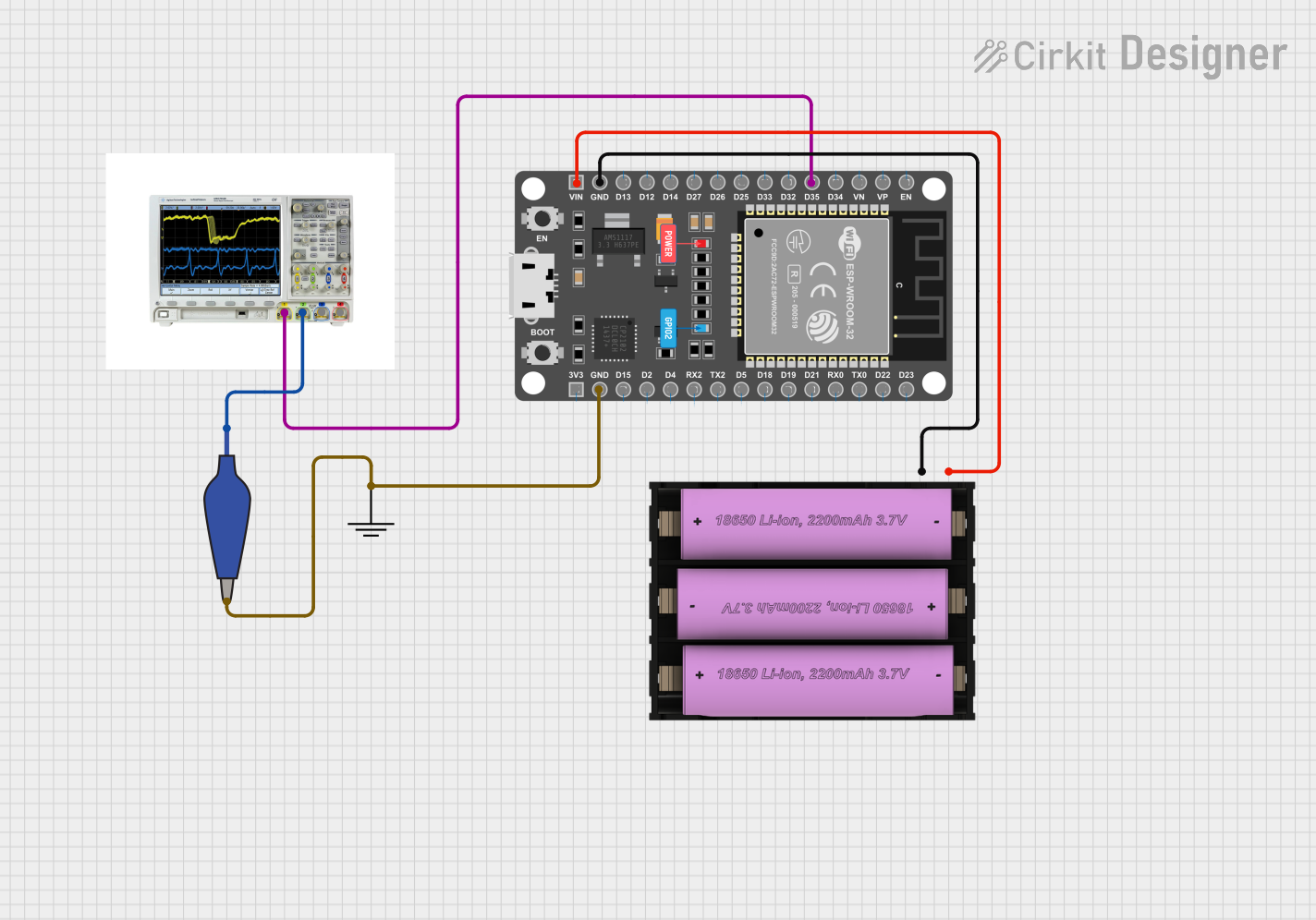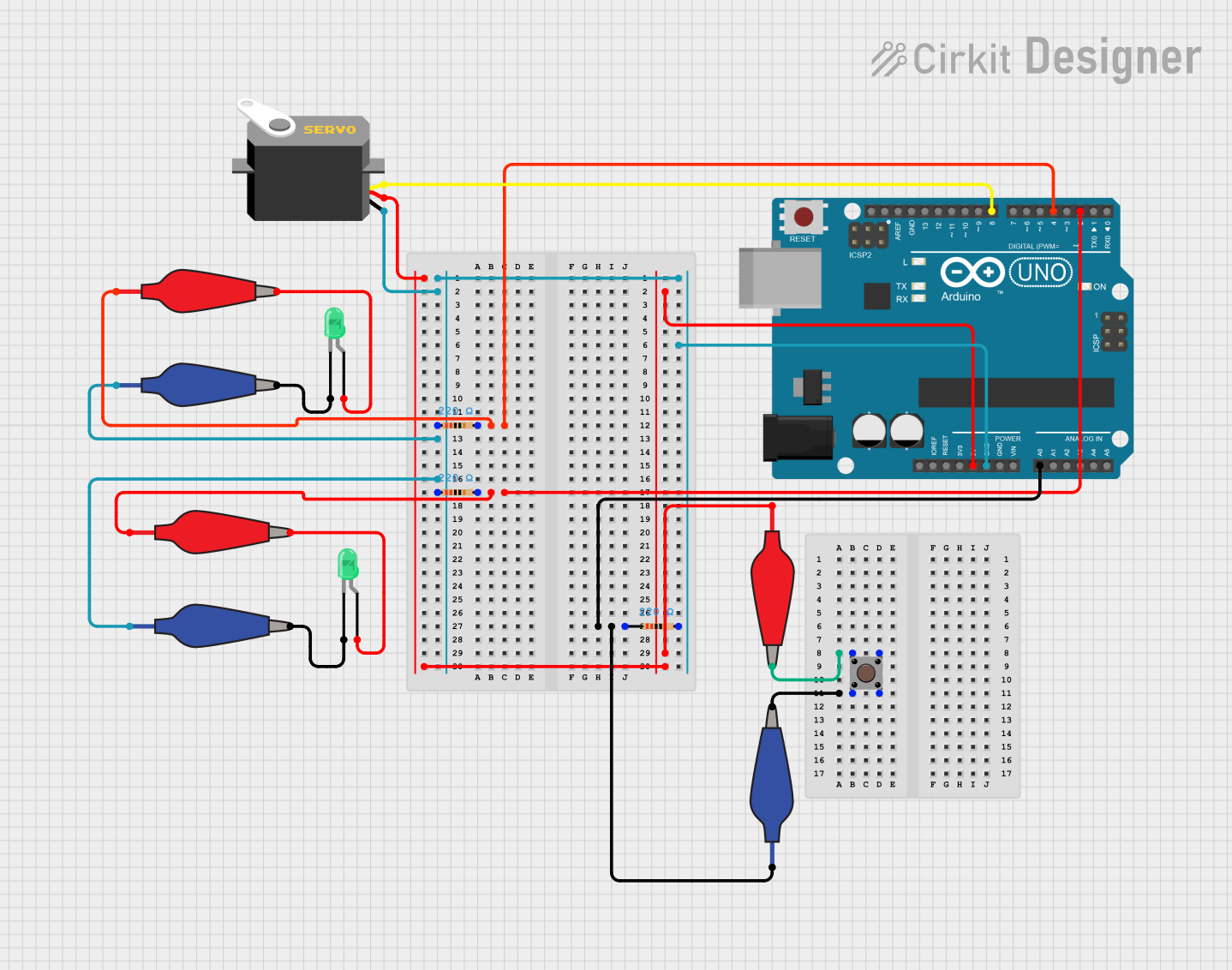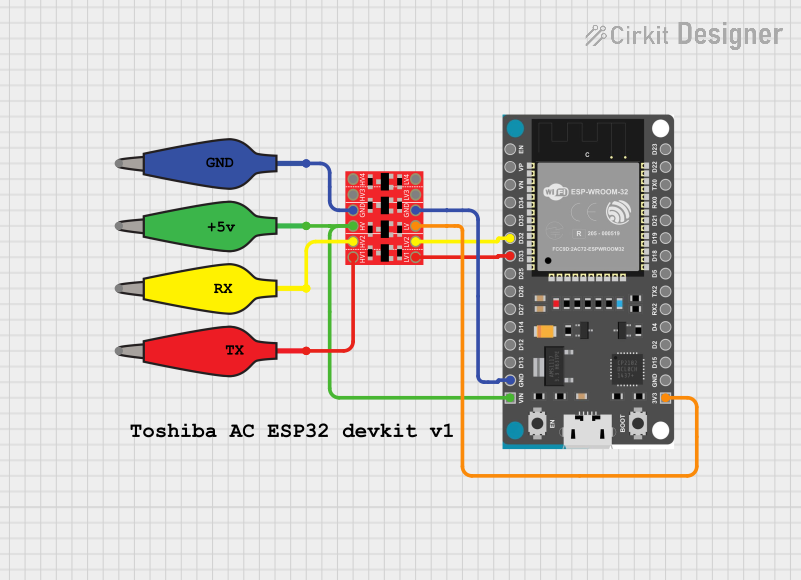
How to Use 12978-alligator_clip_cable_half-green: Examples, Pinouts, and Specs

 Design with 12978-alligator_clip_cable_half-green in Cirkit Designer
Design with 12978-alligator_clip_cable_half-green in Cirkit DesignerIntroduction
The 12978-alligator_clip_cable_half-green is a versatile and easy-to-use component for making temporary electrical connections. This half-length alligator clip cable is encased in a green sheath, indicating its color-coding for easy identification in multi-wire setups. It is commonly used in prototyping, testing, and educational settings where quick and reliable connections are required.
Explore Projects Built with 12978-alligator_clip_cable_half-green

 Open Project in Cirkit Designer
Open Project in Cirkit Designer
 Open Project in Cirkit Designer
Open Project in Cirkit Designer
 Open Project in Cirkit Designer
Open Project in Cirkit Designer
 Open Project in Cirkit Designer
Open Project in Cirkit DesignerExplore Projects Built with 12978-alligator_clip_cable_half-green

 Open Project in Cirkit Designer
Open Project in Cirkit Designer
 Open Project in Cirkit Designer
Open Project in Cirkit Designer
 Open Project in Cirkit Designer
Open Project in Cirkit Designer
 Open Project in Cirkit Designer
Open Project in Cirkit DesignerCommon Applications and Use Cases
- Prototyping circuits on breadboards or other temporary setups
- Connecting components during electrical testing
- Educational purposes in classrooms and labs
- Quick repairs or temporary fixes in electronic devices
Technical Specifications
The 12978-alligator_clip_cable_half-green is designed for low voltage and current applications. Below are the key technical details:
| Specification | Detail |
|---|---|
| Cable Length | Half-length (specifics needed) |
| Voltage Rating | Low voltage (specifics needed) |
| Current Rating | Low current (specifics needed) |
| Connection Type | Alligator clip |
| Insulation Material | PVC |
| Insulation Color | Green |
| Jaw Opening | Approx. 8mm |
Note: Exact voltage and current ratings, as well as the precise length of the cable, should be specified by the manufacturer.
Usage Instructions
How to Use the Component in a Circuit
- Ensure that the power supply to the circuit is turned off before making connections.
- Open the alligator clip by pressing the tail to separate the jaws.
- Attach the alligator clip to the desired component lead, wire, or terminal. Ensure a firm grip for a stable connection.
- Connect the other end of the cable to another alligator clip or a terminal in your circuit.
- Once all connections are made, power can be safely applied to the circuit.
Important Considerations and Best Practices
- Do not exceed the voltage and current ratings of the alligator clip cable to prevent damage or unsafe conditions.
- Use color-coding to your advantage; green cables can be designated for specific signals or ground connections to avoid confusion.
- Inspect the alligator clips for any damage or corrosion before use. Damaged clips may result in poor connections or short circuits.
- When working with sensitive electronics, ensure that you are grounded to prevent electrostatic discharge (ESD) damage.
Troubleshooting and FAQs
Common Issues Users Might Face
- Intermittent Connections: If the connection is unreliable, check that the alligator clip is firmly attached and that there is no dirt or oxidation on the contact surfaces.
- Short Circuits: Ensure that the alligator clips are not touching each other or any unintended parts of the circuit.
Solutions and Tips for Troubleshooting
- Clean the alligator clip jaws with a mild solvent if oxidation or dirt is present.
- If the cable does not hold its connection well, inspect the spring tension in the clip. If it's too loose, the clip may need to be replaced.
- For insulation wear or damage, use electrical tape to cover exposed areas as a temporary fix.
FAQs
Q: Can I use the 12978-alligator_clip_cable_half-green for high-power applications?
A: No, this alligator clip cable is designed for low voltage and current applications. Check the manufacturer's specifications for exact ratings.
Q: How do I prevent the alligator clips from slipping off the terminals?
A: Ensure that the clip's jaws are clean and have adequate spring tension. Place the jaws squarely onto the terminal for a secure grip.
Q: Is it safe to use multiple alligator clip cables in close proximity?
A: Yes, but ensure that the clips do not touch each other to prevent short circuits. Use the color-coding to help maintain clear connections.
Example Code for Arduino UNO Connection
// Example code to demonstrate the use of 12978-alligator_clip_cable_half-green
// with an Arduino UNO. This code assumes the alligator clip is connected to a
// pushbutton that is used to turn on an LED.
const int buttonPin = 2; // Pin connected to the button via alligator clip
const int ledPin = 13; // Built-in LED pin on Arduino UNO
void setup() {
pinMode(buttonPin, INPUT_PULLUP); // Set button pin as input with internal pull-up
pinMode(ledPin, OUTPUT); // Set LED pin as output
}
void loop() {
int buttonState = digitalRead(buttonPin); // Read the button state
if (buttonState == LOW) { // If button is pressed (LOW is due to pull-up)
digitalWrite(ledPin, HIGH); // Turn on the LED
} else {
digitalWrite(ledPin, LOW); // Turn off the LED
}
}
Note: The above code is a simple example to illustrate the use of the alligator clip cable with an Arduino UNO. The actual implementation may vary based on the specific application and circuit design.